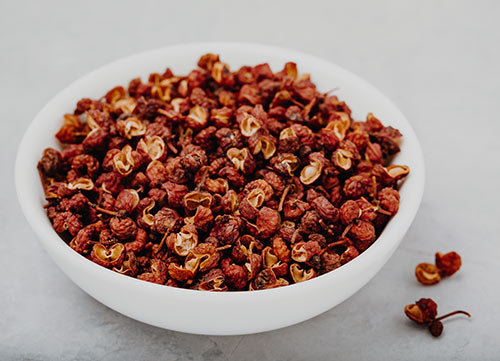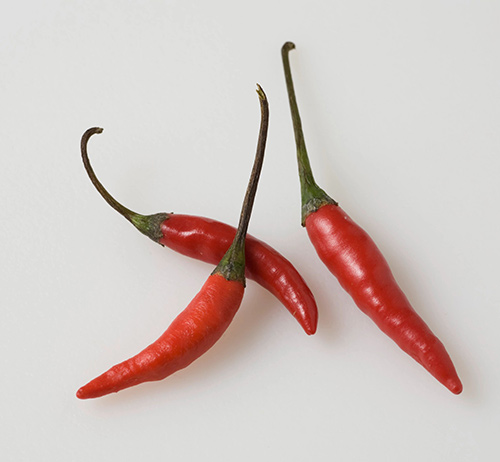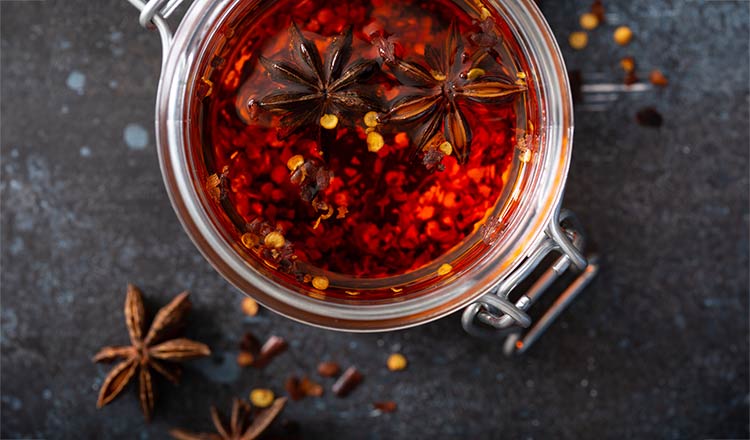There was a time that high-quality and authentic ingredients from abroad were out of reach to Americans, at least without lofty import fees or expensive travel. Luckily for us, the world feels much smaller than it once did, and ingredients like specialty spices, tropical fruits, and chiles are at our fingertips.
Over the years, Americans taste for heat has exploded, with diners seeking out spicy hot sauces, chile pastes, and powders from around the world. And while spicy foods are popular in every corner of the globe, those from Asian cuisines are eternal favorites.
Each of these special sauces, condiments, or ingredients have a unique flavor. How to identify them and how to properly use them are integral parts of understanding Asian culinary culture. The following nine hot sauces and condiments are chosen to represent the most common seasonings used in China, Korea, Vietnam, and Thailand. You can find any of these ingredients at specialty stores, Asian markets, or online.
Hot Bean Paste (also known as Hot Bean Sauce, Chile Bean Sauce, Szechuan Chile Sauce, and Chile Sauce with Bean Paste)
From China, hot bean paste is a red paste made from fermented red chiles and soy beans (sometimes lima beans) with hot and salty flavors. This sauce is usually added to oil and heated to bring out the aroma and flavors. Without heating, the sauce will have a “raw hot” taste. The oil will dissolve the paste and infuse the spice, changing the sauce to a dark red color. For hot food, you can add the hot oil directly to sautéed or stir-fried meat or vegetables; for a cold dish or salad, chill the oil before adding.
Red Chile Oil (also known as Chile Oil or Szechuan-Style Spice Chile Oil)
This oil is one of the most popular condiments of Sichuan cuisine. It is made of ground chile mixed with heated hot vegetable oil, allowing for the spicy flavors and red color of chile to blend into the oil. Although red chile oil is a condiment, it always needs to be combined with other flavors to stand out. For example, when making a shrimp salad, if only a tablespoon of red chili oil is added to it, the flavor will possess a hot taste that is empty. After adding a little salt or soy sauce, the spicy hot flavor will appear much stronger and balanced to the taste buds. This shiny silk-like red oil can be found prepared in Asian markets or online. When unstrained, this sauce is known popularly as chile crisp, which can be bought nearly anywhere today.
Szechuan Peppercorn (called “hua jiao” in Chinese)

This peppercorn is the dark-reddish berry of a prickly ash tree, and its taste can be described as a tingling numbness on the tip of the tongue. It is a perfect combination with hot chile or chile sauce because the spicy flavor of the chile first stimulates the taste buds and then the flavor of the Szechuan peppercorn hits them further, developing the tingling feeling in the mouth that leads to the so-called “flavor high.” However, just like chile oil, Szechuan peppercorn is best used in conjunction with other ingredients, since it provides sensation in the mouth, rather than flavor. The two most popular ways to use it are lightly toasted then ground to a powder and sprinkled with salt over deep-fried crispy shrimp, fish, or vegetables. Another way is to make peppercorn oil by blending the peppercorns with vegetable oil. The flavor will fuse into the oil by the heat of the blending motion.
Fermented Hot Pepper Paste (also known as gochujang)
This ingredient from Korea is a very fine and smooth red paste with hot and salty flavors. The spiciness is milder than Chinese hot bean paste, because the chile used is larger than the Szechuan chile. This sauce may be added directly into a dressing or marinade without being cooked first. It is the best sauce to use to with BBQ chicken, pork, and squid, paired with a little soy sauce and onions. Hot pepper paste is also a beautiful dressing, often combined with sugar and vinegar for a summer noodle salad.
Chile Garlic Sauce (also known as Ground Fresh Chile Paste)
This thin, red, watery sauce originating in Vietnam is very hot and a bit salty, with the added favor of garlic. It makes a fabulous dipping sauce with rice vinegar, sugar, fish sauce or soy sauce, and cilantro. It is an excellent hot sauce for salads because the fermentation flavor is much lighter, owing to the lack of fermented soybeans found in other sauces. Chile garlic sauce may also be cooked and infused in oil for sautés, stir-fries, stews, and soups. The ubiquitous Sriracha sauce is essentially the same, with a finer and smoother texture.
Chile Sauce in Soybean Oil
From Thailand, this is a dark red hot sauce with shallots, fish sauce, shrimp paste, palm sugar, and chile. It’s flavor is sweet, hot, and a little salty, distinguished from Chinese hot bean paste from the addition of shrimp and fish sauce. This sauce is a wonderful addition to a stew, soup, or salad dressing because it has been roasted with soybean oil as part of its production, meaning it does not need to be bloomed in oil before using.
Red Curry Paste
Curry paste is another one of the most popular spicy pastes from Thai cuisine, made using chiles and other aromatics (but no curry powder). A favorite use of Thai curry paste is cooking it with coconut milk to create a sauce for vegetables, meat, poultry, or even just noodles. Curry pasts should be cooked in a little bit of vegetable oil to bring out the flavors, then combined with coconut milk to smooth and balance the spices. Red Curry Paste may also be added to soup, marinades, or sautés for a bold, complex flavor.
Fresh Red Chile

Sometimes called the Mother of hot sauces, fresh chile is widely used in Asian cuisines. It can be found dehydrated, for use whole or as a chile powder. Fresh red chile is also often minced and fermented for a hot and tangy sauce. The most popular fresh red chili in United States is called the Thai bird chile, a small, thin red or green chile pepper around 2 to 3 inches long with a fiery hot taste. As some people might be allergic to it (and because it is extremely spicy), is it recommended to wear disposable gloves when preparing any hot chile, particularly the Thai bird.
Chile Powder (also known as Hot Pepper Powder)
This ingredient is simply ground red chile flakes. One of the most popular Asian chile powders is Korean how pepper powder, which has a vibrant red color and a relatively mild spice. It is often used to make chile oil, or added to mrines for meat, seafood, and vegetables.


